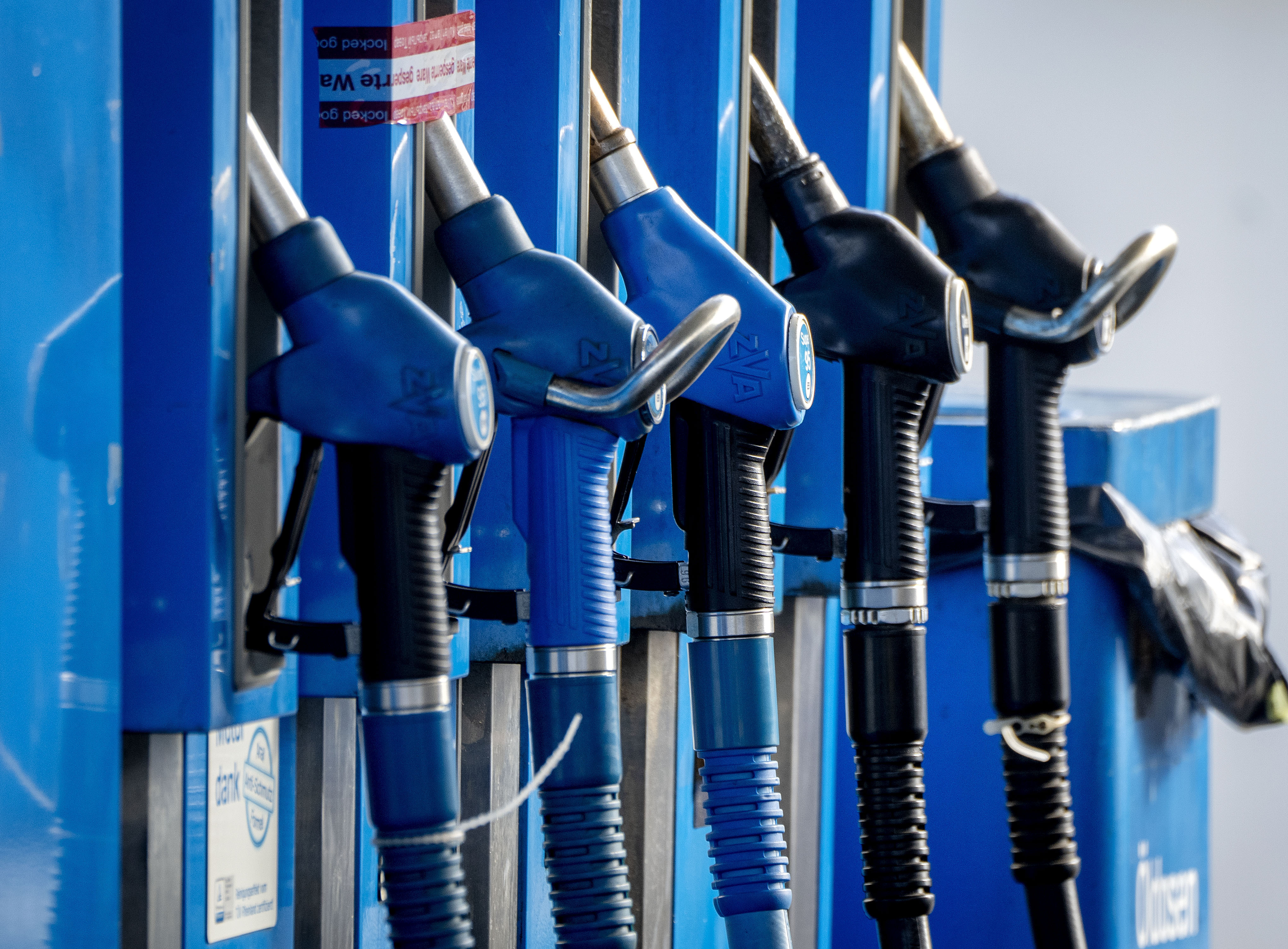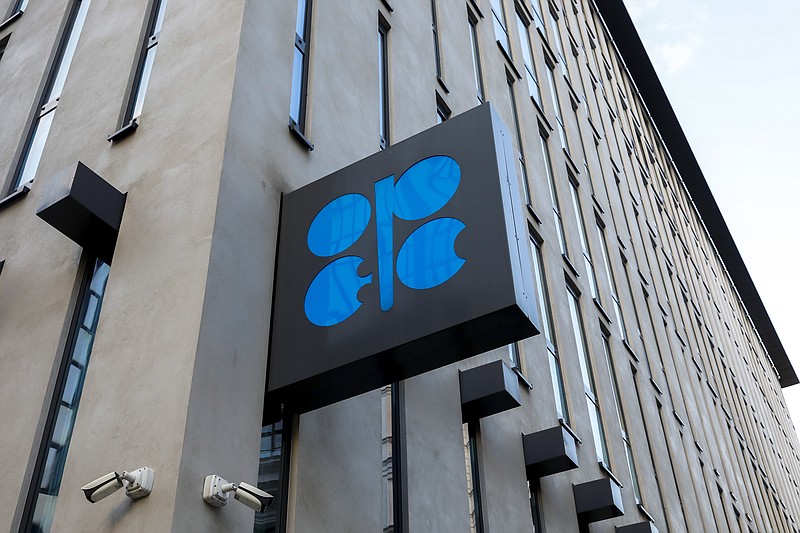FRANKFURT, Germany -- The Saudi-led OPEC oil cartel and allied producers including Russia did not change their targets for shipping oil to the global economy amid uncertainty about the impact of new Western sanctions against Russia that could take significant amounts of oil off the market.
The decision at a meeting of oil ministers Sunday came a day ahead of the planned start of two measures aimed at hitting Russia's oil earnings in response to its invasion of Ukraine. Those are: a European Union boycott of most Russian oil and a price cap of $60 per barrel on Russian exports imposed by the EU and the Group of Seven democracies.
It is not yet clear how much Russian oil the two sanctions measures could take off the global market, which would tighten supply and drive up prices. The world's No. 2 oil producer has been able to reroute much, but not all, of its former Europe shipments to customers in India, China and Turkey.
The impact of the price cap is also up in the air because Russia has said it could simply halt deliveries to countries that observe the limit. But analysts say the country would likely also find ways to evade the cap for some shipments.
On the other side, oil has been trading at lower prices on fears that coronavirus outbreaks and China's strict zero-covid restrictions would reduce demand for fuel in one of the world's major economies. Concerns about recessions in the U.S. and Europe also raise the prospect of lower demand for gasoline and other fuel made from crude.
That uncertainty is the reason the OPEC+ alliance gave in October for slashing production by 2 million barrels per day starting in November, a cut that remains in effect. Analysts say that took less than the full amount off the market because OPEC+ members already can't meet their full production quotas.
Because oil is ordered several weeks in advance, the production trims only began working through the market in the past few weeks. In addition, releases from the strategic stockpile of the United States are winding down.
An OPEC+ statement Sunday pushed back against criticism of that October decision in view of the recent weakness in oil prices, saying the cut had been "recognized in retrospect by the market participants to have been the necessary and the right course of action towards stabilizing global oil markets."
The White House, which has pressed for more oil supply to keep gasoline costs down for U.S. drivers, at the time called the cut "shortsighted" and said the alliance was "aligning with Russia."
Brent crude, the international benchmark, was $85.57 a barrel on Friday, down from more than $110 in June, while West Texas Intermediate crude was about $80 a barrel. Many analysts say that the Saudis are determined to seek a price of around $90 a barrel for Brent, and that they will cut production, regardless of protests from the West, if prices fall significantly from that level.
Analysts say that the outlook for the oil market in the coming weeks is uncertain. Today, an embargo on tanker shipments of Russian crude to ports in the European Union will begin, to be followed by a ban on Russian refined products, such as diesel, on Feb. 5.
Average gas prices have fallen for U.S. drivers in recent days to $3.41 per gallon, according to motoring club federation AAA.
While U.S., European and other allies seek to punish Russia for the war in Ukraine, they also want to prevent a sudden loss of Russian crude that could send oil and gasoline prices back up.
That is why the G-7 price cap allows shipping and insurance companies to transport Russian oil to non-Western nations at or below that threshold. Most of the globe's tanker fleet is covered by insurers in the G-7 or EU.
Russia would likely try to evade the cap by organizing its own insurance and using the world's shadowy fleet of off-the-books tankers, as Iran and Venezuela have done, but that would be costly and cumbersome, analysts say.
The cap of $60 a barrel is near the current price of Russian oil, meaning Moscow could continue to sell while rejecting the cap in principle. Oil use also declines in the winter, in part because fewer people are driving.
"If Russia ends up taking off more oil than about a million barrels per day, then the world becomes short on oil, and there would need to be an offset somewhere, whether that's from OPEC or not," said Jacques Rousseau, managing director at Clearview Energy Partners. "That's going to be the key factor -- is to figure out how much Russian oil is really leaving the market."
The OPEC+ statement set its next meeting for June 4 but said the coalition could meet at any time to address market developments.
The price cap initiative, which has been led by the United States and endorsed by the Group of 7 countries, Australia and the European Union, aims to reduce the revenues Moscow has to finance its war in Ukraine, while still encouraging the Kremlin to sell oil to key customers outside the European Union to avoid a global oil shock.
Analysts and traders are skeptical about how well the price cap will work because it may be difficult to administer and will mainly hit large customers for Russian oil like India and China, which have not sided with the West in the war with Ukraine. U.S. officials have argued that they are trying to avoid a sudden contraction of supply, and the resulting spike in gasoline and heating oil prices, as the EU embargo takes hold.
Russia has said it will not accept a price cap and has threatened to cut off supplies from countries that comply. Analysts say that Russia has been building a so-called "shadow fleet" of old tankers to handle its oil and avoid the sanctions, but they are skeptical that it can assemble a large enough flotilla. If it can't, Russia may need to begin closing down wells. But Moscow has managed to keep production much higher than many analysts anticipated in the early days of the war in Ukraine.
The coming weeks may see an interplay between the growing difficulties that Russia is likely to have in selling its oil and the effects of a slowing global economy. China will be a key factor. Lockdowns there are reducing demand for imports. But widespread protests against those restrictions have been followed by some easing of the "zero-covid" rules, offering some hope of a gradual easing and a bounce back in consumption of fuel.
Information for this article was contributed by David McHugh and Cathy Bussewitz of The Associated Press and by Stanley Reed of The New York Times.
 FILE - Taps are photographed at a gas station in Frankfurt, Germany, on Oct. 5, 2022. The Saudi-led OPEC oil cartel and allied producing countries, including Russia, are scheduled to decide how much oil to supply to the global economy amid weakening demand in China and uncertainty about the impact of new Western sanctions against Russia that could take significant amounts of oil off the market. (AP Photo/Michael Probst, File)
FILE - Taps are photographed at a gas station in Frankfurt, Germany, on Oct. 5, 2022. The Saudi-led OPEC oil cartel and allied producing countries, including Russia, are scheduled to decide how much oil to supply to the global economy amid weakening demand in China and uncertainty about the impact of new Western sanctions against Russia that could take significant amounts of oil off the market. (AP Photo/Michael Probst, File)